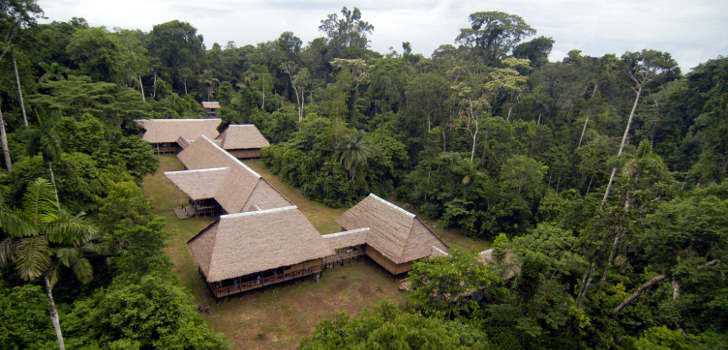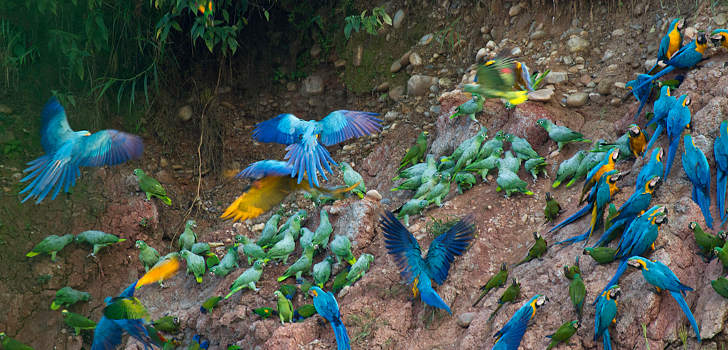The Tambopata National Reserve, also known as the Tambopata – Candamo National Reserved Zone, is a nature reserve in the Amazon rainforest. It is located in the Madre de Dios region in south-eastern Peru, close to the border with Bolivia and within relatively easy reach from Cusco and Machu Picchu. The closest town is Puerto Maldonado.
The reserve covers an area of 274,690 hectares (1061 square miles) stretching from the Andes mountains to Bolivia and borders the Bahuaja Sonene National Park. It is also close to the Manú National Park and Madidi National Park.
A biodiversity hotspot
The reserve is one of the most biologically diverse areas in the world and the Peruvian government has officially recognised it as the Biodiversity Capital of the country.
According to current estimates by the conservationists Fauna Forever, the area is home to 160 species of mammals and at least 650 bird species. Other studies also report 1,200 butterfly species, over 150 species of amphibians and reptiles and approximately 100 fish species, as well as over 10,000 species of plants.
Wildlife found here include healthy populations of even endangered species such as the Giant Amazon River Otter, Jaguar, Tapir, White-Lipped Peccary, four of the six species of Caiman, as well as the Giant Anteater, Giant Armadillo, Jaguarundi, Harpy Eagle, the Yellow-Spotted Side-Neck Turtle and even the Small-Eared Dog, Pampas Deer and Maned Wolf, amongst others.
Monkeys here include eight different species, including ones that are easy to see or hear such as the Red Howler Monkey.
The particularly high levels of biodiversity are thought to be due to various geographical factors that make Tambopata unique:
- It lies in a transitional area between humid tropical and subtropical rainforest.
- Altitudes range from 200m to 2,000 m (the Tambopata River reaches the Andes).
- Rapid changes in temperature caused by annual cold fronts “friajes” coming in from the South.
- Considerable changes in yearly annual rainfall.
- The Reserve contains two islands of savannah (grasslands) called the “Pampas del Heath”, which are among the last well-conserved in existence in the Amazon. Scientists have yet to agree but during several periods of the Ice Age, this is one of various patches of the Amazon thought to have become isolated and therefore able to resist drying up and evolve differently.
The world’s largest known macaw and parrot clay licks
The area’s macaw and parrot clay licks have been the subject of various wildlife documentaries and magazine articles, including in the National Geographic. Clay licks are exposed “cliffs” on riverbanks where parrots flock, sometimes in the hundreds, to feed on clay.
The Reserve contains the largest known clay lick in the world as well as the highest concentration of clay licks known. Up to 17 different parrot species, including 6 macaw species, visit these claylicks.
Ecotourism in Tambopata
Most visitors take flights to Puerto Maldonado, the closest town, from Cusco or Lima, and others come by bus. See getting to Tambopata for more details.
Visitors to the area have various accommodation options suited to all budgets, ranging from rustic to luxury lodges in the rainforest itself and also hotels and hostels in Puerto Maldonado.
Bookings at nearly all of the Amazon Jungle lodges include tours, meals and transport. Some of the rainforest lodges are also research centres where you can meet resident biologists.
To protect the reserve, very few of the lodges are within the reserve itself (for example, Sandoval Lake Lodge and Tambopata Research Center are). The rest are within the rainforest on the Tambopata and Madre de Dios rivers, just outside the reserve.
Bookings at the hotels and hostels do not include tours or meals but at many of them you can add them on to your reservation.
See the Where to Sleep section for more details.


Group of macaws at Colorado Clay Lick
